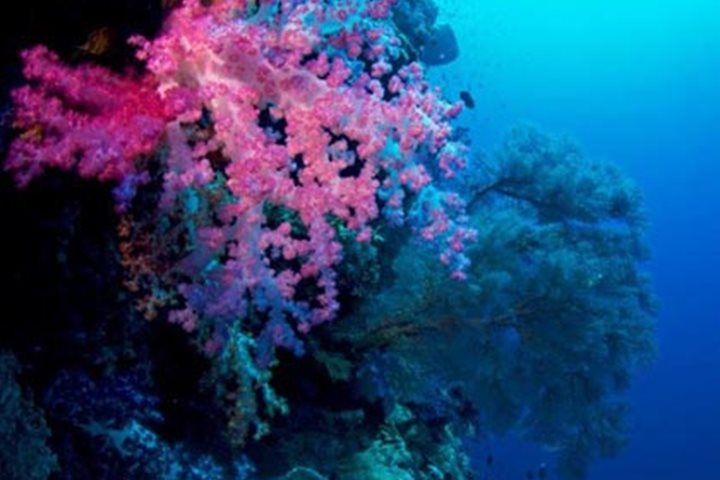Tonight our epic voyage through the heart of the Coral Triangle comes to a close. From Palau we’ve wound our way through the myriad islands of Raja Ampat and skirted West Papua’s Bird’s Head Peninsula. Along the way we’ve been mesmerized by pulsing schools of fish over neon coral reefs and welcomed with friendly smiles. We expected great things this trip, but were still blown away by Palau and Indonesia’s beautiful scenery, reefs, and people. “Best dive ever” came up on sequential days as we continued to find better, healthier, and more exciting reefs to explore trumping the previous days’ find. National Geographic Orion has concluded her inaugural voyages with the bar set very high. As we pack and say our goodbyes, a highlight reel is beginning to form. Long flights and plenty of time to decompress allow us to perfect the story we’ll share back home with friends and family.
I will always remember this voyage for its incredible colors and clouds of fish, but next to the long list of reef fish spotted and interesting behaviors observed, an asterisk catches my eye. Something was missing the instant we left the protected waters of Palau and small reserves of Raja Ampat. For all of our hours immersed in warm azure waters, we saw very few predators, in particular predatory fish. “No sharks” conclude the dive logs of all 18 dives done in Indonesia. Visiting uninhabited islands did little to increase the number of big fish sightings, and because of that, we must all take notice. If the players at the top of the food web are not present, how healthy could the rest of the network really be?
Palau was teeming with sharks, especially on the big drop-offs and high-flow areas. There’s no reason why Raja Ampat, Fakfak, and the Lucipara group couldn’t be as awe-inspiring as Palau, but it will take dedicated people and lots of work to accomplish this goal. Because of Palau’s success as a marine reserve, hopefully the take-home message is that there is hope. With effort, time, and money we can ensure that more parts of the planet become high-impact, memorable locations and ultimately healthier places for us to obtain food. There is so much potential for good in the Coral Triangle. It is a place with incredible biodiversity because its habitats are varied and plentiful. Given the chance to rebound, the Coral Triangle would astound us with colors, shapes, motions, and experiences we couldn’t even imagine. I hope everyone onboard realizes they can have a positive impact on a very special part of the world by supporting conservation efforts in Palau, Raja Ampat, and beyond. Then, on our next voyage, the dives, snorkels, and glass-bottom boat rides will be even more spectacular!






